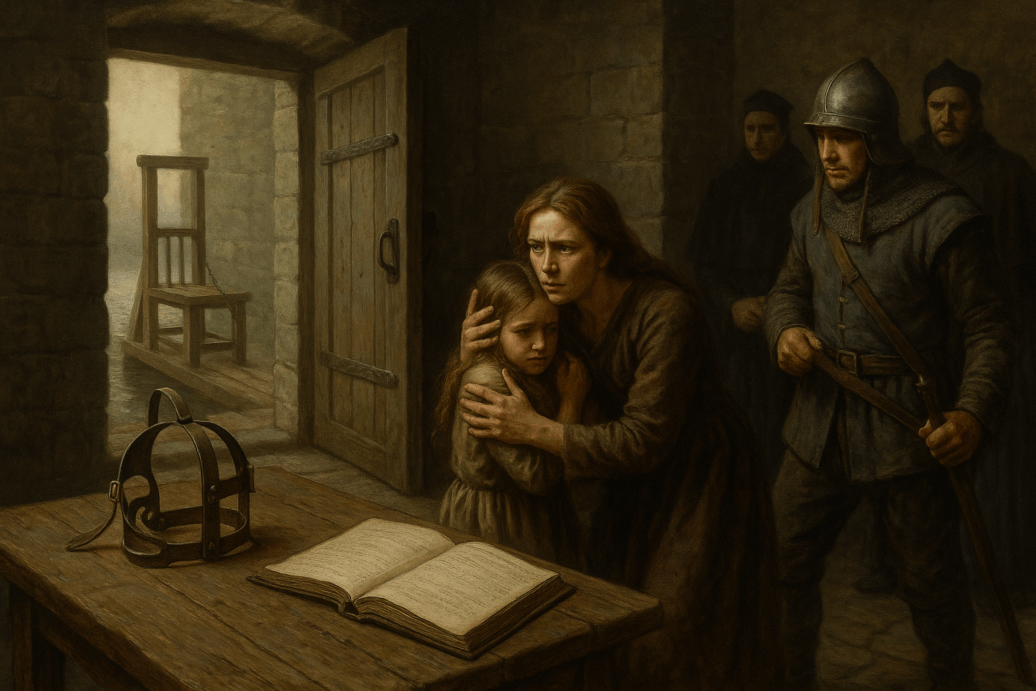Fear and Gender in Medieval Justice
In a world ruled by suspicion and fear, the administration of justice in medieval Europe was deeply intertwined with patriarchy and misogyny. Historical records show how torture differed for men and women, revealing not only societal hierarchy but also deliberate reinforcement of patriarchal control. While men were often subjected to physical punishment for crimes against authority, women faced unique devices and methods intended to subjugate and humiliate, reflecting a symbolic meaning of torture and gender. Visitors interested in the lived realities of this era can explore Medieval Torture Museum in Chicago to see related exhibits.
Devices and Practices Targeting Women
Among the most infamous instruments were those designed specifically for women. The cultural meaning of the scold’s bridle illustrates a method to silence outspoken women, enforcing social norms and punishment of outspoken women in medieval society. Other devices, including restraining belts and cages, were employed to reinforce control and humiliation, demonstrating the gendered nature of coercion. Historical accounts also describe why women were drowned as witches, a practice rooted in fear, superstition, and medieval belief in female susceptibility to witchcraft. For those studying these artifacts firsthand, the Medieval Torture Museum in Los Angeles offers detailed displays.
Punishment of Children and Societal Implications
Children were not spared this severe system. Evidence about the punishment of children in medieval times indicates the same principle of fear and authority extended into youth, often to enforce familial and community order. How society responded to the torture of women and children indicates a disturbing agreement about how violence was normative, and regulation was enforced as part of being a public or civil matter. The confluence of fear, subjugation, and social demand guaranteed children, as well as women, were structural victims of marginalization.
Gendered Accusations and Witch Hunts
The disproportionate targeting of women during witch trials reflects a calculated social bias. Scholars examining why women were more often accused of witchcraft point to entrenched misogyny and the connection between witch hunts and misogyny. The role of gender in medieval justice system was explicit: women were presumed morally and spiritually weaker, and torture served to maintain domination and authority. Executioners and inquisitors were aware that gendered punishments reinforced societal norms, further embedding repression and intimidation into daily life. Visitors can explore these insights in a historical context at the Medieval Torture Museum in St Augustine.
Symbolic and Social Meanings of Torture
In addition to immediate punishment, torture was also highly symbolic. The way torture served as a means of reinforcing patriarchal control demonstrates the intersection of inflicting physical pain and societal hierarchy. Instruments served both as deterrents and as means of coercion, all while instilling fear and demanding compliance. The symbolic meaning of torture – and gender – transcended its practical implications into public consciousness, reaffirming normative practices and punishing any deviations. The devices and techniques inflicted upon women and children, while practical, also served a ritualistic role that indoctrinated broader social lessons about punishment and authority into the very act itself.
Legacy and Lessons
Examining the relationship of gender, fear, and punishment shows the all-too-common injustices, brutality, and indignities that characterized medieval society. The combination of societal considerations regarding female vulnerability to witchcraft, the targeting of children in a strategic manner, and the punishment of women who spoke out in medieval society shows systemic oppression at work.. Studying these historical realities helps modern audiences grasp the roots of gendered injustice and the social mechanisms that allowed such practices to flourish. For further exploration of these themes, the blog provides in-depth articles and analysis.






